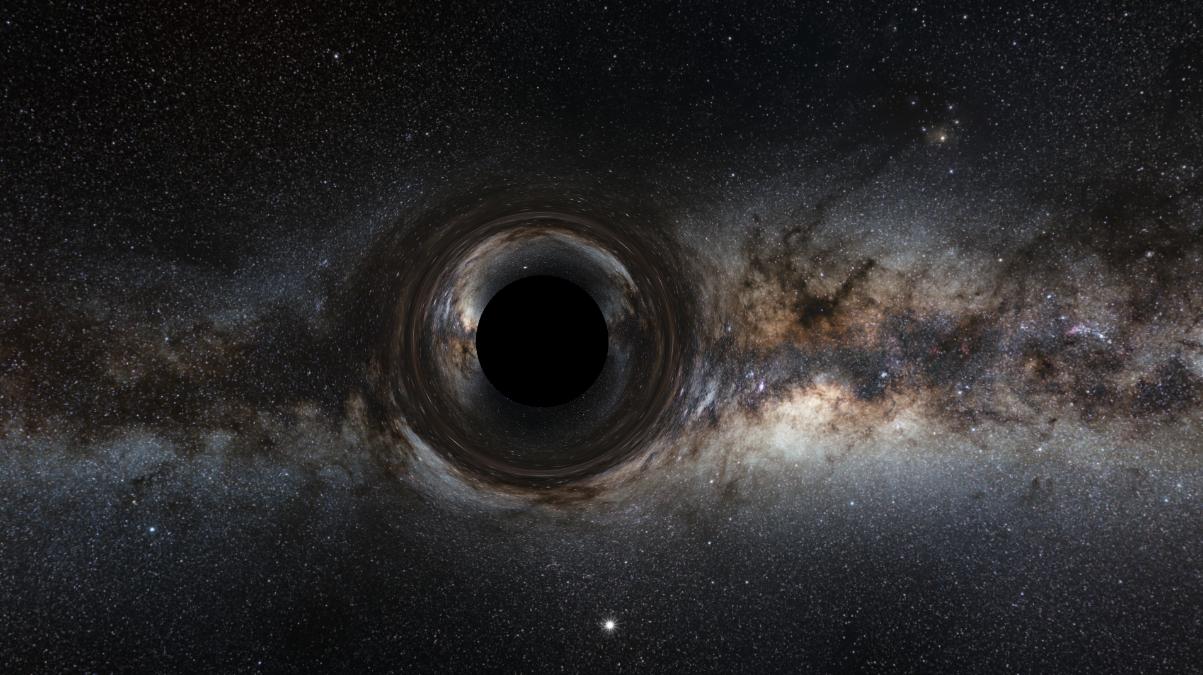Astronomers first discovered the gravitational ejection of a giant black hole from the center of a distant galaxy.

Scientists from NASA recorded the departure of a giant black hole from the center of its galaxy at a distance of 35 thousand light years. According to experts, this shift, or rather, the release may be due to the strongest perturbation of the gravitational field. Earlier, astronomers have observed how some black holes are removed at a certain distance from a recent location. But 35 thousand light years is really a lot. The case of the ejection of a black hole with a mass of 1 billion solar masses from the center of its galaxy was detected using the Hubble telescope.
The calculations showed that the black hole needed to escape the energy that 100 million supernovae could explode, which exploded simultaneously. The only plausible explanation for how this happened is in the assumption that two black holes merged in the center of a distant galaxy, resulting in a strong disturbance of the gravitational field, which created a wave that cleared the center of the galaxy.
')
Gravitational waves were first predicted by Albert Einstein. He believed that they could appear if two massive objects interact side by side. For example, it may be their collision. The manifested perturbation of the gravitational field in this case is similar to concentric circles diverging in water in the event that something falls on the water.
Last year, the Laser Interferometer Gravitational-Wave Observatory ( LIGO ) helped scientists prove the existence of gravitational waves.
Astronomers who watched the release, say they were very surprised by what happened. “When I first saw this, I thought that we were seeing something special,” said Marco Kjaberj, the head of the astronomer team. He works at Johns Hopkinson University in Baltimore. “When we looked at the images from the Hubble, the Chandra X-ray Observatory, and the Sloan Digital Sky Survey, we proved the existence of such objects. We received a certain amount of data, from X-rays to infrared. Moreover, the source of this radiation was much larger than the usual black hole. ”
Images taken by Hubble in the visible and infrared spectra made it possible to understand that the galaxy that the telescope saw is very unusual. The photos show a bright quasar , the “energy signature” of a black hole, which is far from the core of the galaxy itself. Observation of an object is hampered by the fact that it is impossible to see a black hole through a telescope, its existence is confirmed empirically. The quasar received its catalog number, it is 3C 186. As it turned out, the galaxy with the black hole in question is 8 billion light-years away from us. Observation of a distant object was carried out as part of the Hubble program to observe the most distant objects of the Universe.
“I assumed that I would see merging galaxies. I also expected to see galaxies with a chaotic structure not far from quasars. But I did not expect that the quasar, and therefore the black hole, are so far away. Giant black holes are usually located in the centers of galaxies, so it was amazing to observe an object that is located so far from the center of its galaxy, ”commented the discovery of Kyberj.
The project team tried to estimate the size of a black hole by comparing the distribution of the light of stars in a distant galaxy with the characteristics of an ordinary elliptical galaxy, a model of which was created using a computer. As it turned out, the black hole departed from the center of its galaxy farther than our Sun is removed from the center of the Milky Way.
The characteristics of the black hole were calculated on the basis of spectroscopic analysis. "As it turned out, the gas, located near the black hole, was removed at a speed of about 7.5 million kilometers per hour from the center of its galaxy," the project representatives said. Since the gas in question is gravitationally “tied” to a black hole, its speed can also be considered the speed of the main object. If a rocket sent from Earth would move so fast, it would have reached the moon three minutes after takeoff.

Now there are several assumptions about what made such a massive object move so quickly. One explanation is the collision of two galaxies, followed by a merger. Black holes located in the center of galaxies, first rotated relative to each other, causing a strong gravitational perturbation. Moreover, the gravitational waves did not spread evenly in all directions, but were more active in one of the directions. After they merged, the generation of gravitational waves ceased. But after the emergence of a unified black hole, the generation of gravitational waves resumed, only in the opposite direction, which led to the ejection of a supermassive black hole from the center of a new elliptical galaxy.
Now the project participants are testing their assumption, trying to more accurately measure the speed of a black hole and its accretion gas disk. More detailed data will help clarify the nature of the object and its unusual behavior.
Source: https://habr.com/ru/post/402571/
All Articles